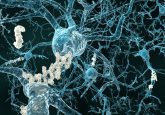Biomarker-based drug safety assessment in the age of systems pharmacology: from foundational to regulatory science

Improved biomarker-based assessment of drug safety is needed in drug discovery and development as well as regulatory evaluation. However, identifying drug safety-related biomarkers such as genes, proteins, miRNA and single-nucleotide polymorphisms remains a big challenge. The advances of ‘omics’ and computational technologies such as genomics, transcriptomics, metabolomics, proteomics, systems biology, network biology and systems pharmacology enable us to explore drug actions at the organ and organismal levels. Computational and experimental systems pharmacology approaches could be utilized to facilitate biomarker-based drug safety assessment for drug discovery and development and to inform better regulatory decisions. In this article, we review the current status and advances of systems pharmacology approaches for the development of predictive models to identify biomarkers for drug safety assessment.
The low productivity crisis in pharmaceutical research and development suggests the current paradigm of drug discovery and development used in the past 30 years is unsustainable. Some new approaches have improved the success rate. For example, approximately 50% of drug failures were attributed to unacceptable absorption, distribution, metabolism, excretion and toxicity (ADMET) properties [1]. Hence, filtering and optimizing ADMET properties in early stage of drug discovery are widely applied to reduce the high attrition rate. However, drug safety remains a major concern.
Click here to view the full article.






